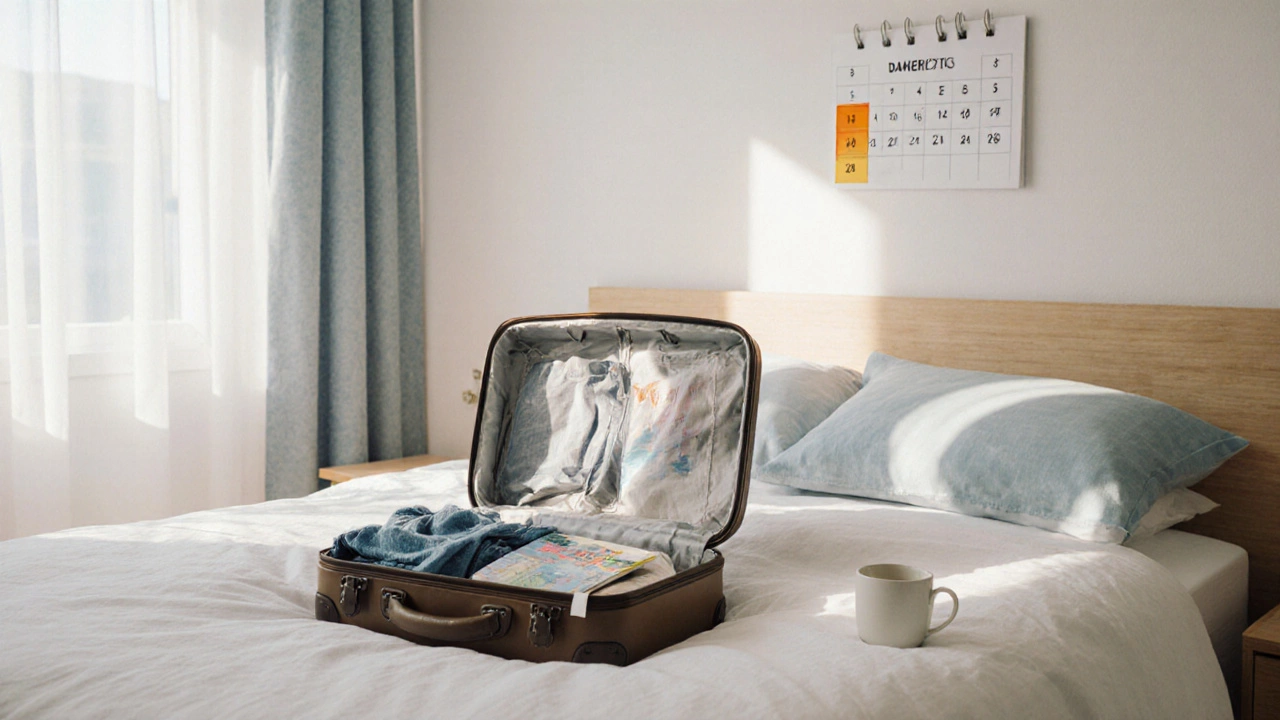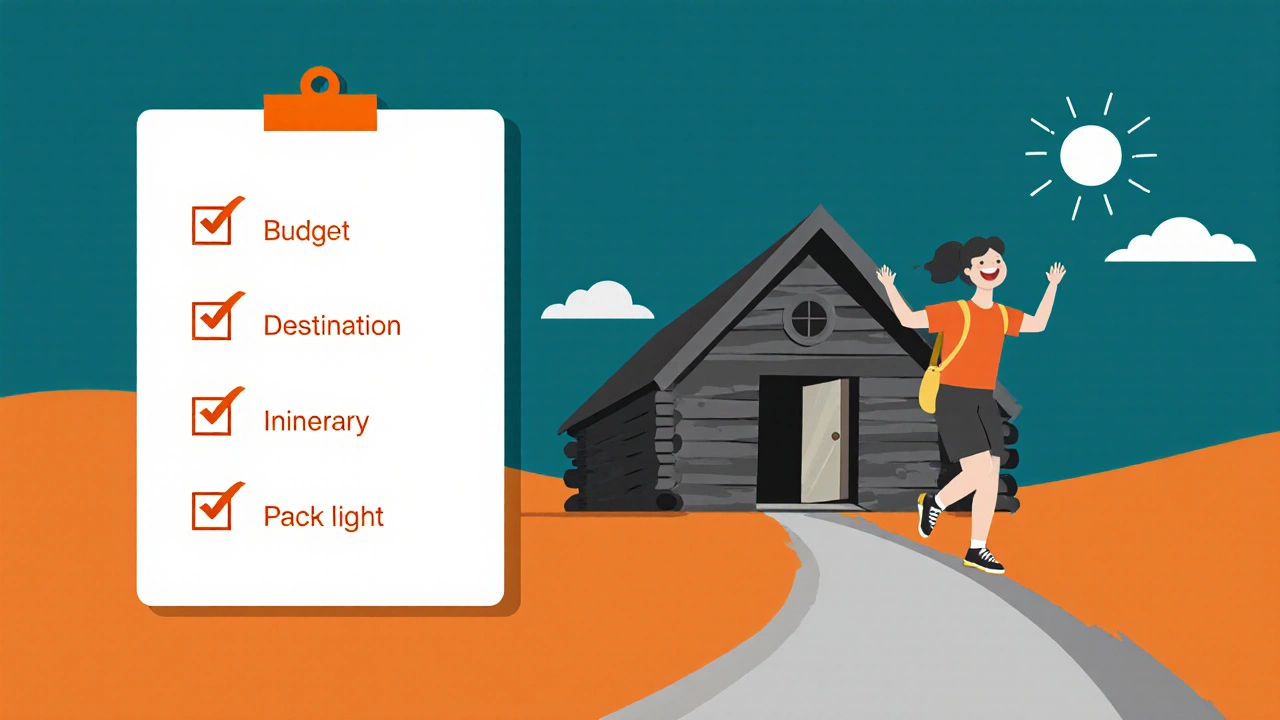Mini Vacation Explained: Quick Getaways in 3‑5 Days
 Oct, 9 2025
Oct, 9 2025
Mini Vacation Planner
Duration Preferences
Budget Range
Travel Style
Recommended Destination
Select your preferences above to see personalized recommendations for your mini vacation.
Ever feel like you need a reset but can’t spare a week or more? A mini vacation might be the answer - a bite‑size break that gives you the recharge you crave without the hassle of a long‑haul trip.
What Is a Mini Vacation?
Mini vacation is a short, intentional break lasting anywhere from a long weekend to a few days, designed to offer rest, adventure, or both without the extensive planning of a traditional holiday. It sits between a day‑off and a full‑scale vacation, giving travelers a focused experience while keeping time and cost low.
People often use the terms weekend getaway or micro holiday interchangeably, but subtle differences exist. A weekend getaway usually starts Friday evening and ends Sunday night, whereas a mini vacation can stretch to Thursday, allowing a three‑to‑five‑day window.
Why Take a Mini Vacation?
Short breaks pack a big punch for mental health. Studies from the University of Auckland show that a 3‑day break can reduce stress hormones by up to 30% - almost the same effect as a week‑long vacation.
Financially, a mini vacation often costs 40‑60% less than a traditional trip. You skip pricey flights, stay in budget‑friendly accommodation, and still get to explore new scenery. Plus, the planning time shrinks dramatically, meaning you can fit a trip into a busy work schedule.
Flexibility is another win. Because you’re not locked into a long itinerary, you can pivot plans on the fly - swap a museum visit for a spontaneous hike if the weather changes.
How Long Should It Be?
Most travelers find the sweet spot between 3 and 5 days. Anything shorter feels rushed, while anything longer starts to resemble a regular vacation.
Here’s a quick look at typical durations:
| Type | Typical Length | Ideal For |
|---|---|---|
| Mini vacation | 3-5 days | Refresh after a busy period |
| Weekend getaway | 2-3 days | Quick change of scenery |
| Traditional vacation | 7+ days | Deep immersion in a destination |
When you have a 4‑day window, you can travel Monday‑Thursday, enjoy a full day at the destination, and still be back for Friday work without feeling rushed.
Planning Your Mini Vacation
Effective planning starts with a clear travel budget. Set a realistic cap - many mini trips stay under $500 (NZD) when you factor in transport, accommodation, meals, and activities.
Next, pick a destination that matches the time you have. Ideal spots are within a 2‑hour flight or a 4‑hour drive from your home base. Proximity reduces transit fatigue and maximizes on‑ground time.
Draft a loose itinerary. Instead of scheduling every hour, target 2‑3 key experiences (e.g., a local market, a hike, and a sunset spot). Leave room for spontaneity - that’s where the magic of a short break often happens.
Don’t forget logistics: confirm transport times, book accommodation that offers flexible check‑in/out, and pack light. A carry‑on plus a daypack usually covers everything for a 4‑day stint.
Types of Mini Vacations
Mini vacations aren’t one‑size‑fits‑all. Here are five popular flavors you can try:
- City break: Dive into museums, cafés, and night life. Think Auckland to Wellington for a quick cultural fix.
- Nature escape: Head to a national park for short hikes or stargazing. The Coromandel’s forest walks fit perfectly into a three‑day slot.
- Beach retreat: A beachfront cottage or a surf camp can recharge you in just a couple of days. Beaches on the Bay of Islands are a short flight away.
- Adventure sprint: Try zip‑lining, kayaking, or mountain biking. A weekend in Rotorua’s adventure parks gives you thrills without a long travel time.
- Wellness pause: Book a spa resort or a yoga retreat for meditation and massage. Wanaka’s wellness lodges offer day‑pass packages ideal for short stays.
Pick the style that matches your current mood and you’ll return feeling refreshed, not exhausted.

Mini Vacation Checklist
- Set a clear budget (include a 10% buffer).
- Choose a destination within 2‑hour travel radius.
- Book accommodation with flexible check‑in/out.
- Sketch a light itinerary - 2‑3 main activities.
- Pack light: one carry‑on, one daypack.
- Download offline maps and any needed tickets.
- Notify work of your brief absence and set an out‑of‑office reply.
- Leave a copy of your itinerary with a trusted friend or family member.
Common Pitfalls & How to Avoid Them
Over‑planning. Trying to cram too many activities turns a relaxing break into a stressful sprint. Stick to a maximum of three “must‑do” items.
Under‑budgeting. Forgetting small costs - like coffee, local transport, or souvenirs - can blow up the budget. Add a modest daily allowance for extras.
Choosing a far‑away destination. Long travel times eat into your precious break. Use the 2‑hour rule for flights or a 4‑hour drive limit.
Ignoring local weather. A surprise rainstorm can ruin an outdoor plan. Check the forecast a day before and have a backup indoor activity.
By keeping these traps in mind, you’ll turn a mini vacation into a smooth, enjoyable micro‑holiday.
Frequently Asked Questions
How far in advance should I book a mini vacation?
For domestic trips, booking 2‑3 weeks ahead usually secures good rates on flights and accommodation. If you’re traveling during a peak holiday period, aim for 4‑6 weeks to lock in the best deals.
Can I take a mini vacation with a limited budget?
Absolutely. Focus on nearby destinations, use public transport, stay in hostels or Airbnb rooms, and cook a few meals yourself. Many travelers keep a 3‑day mini trip under $300 (NZD) by following these steps.
Is a mini vacation suitable for families with kids?
Yes - especially if you choose child‑friendly activities like beach days, nature walks, or a city zoo. Keep travel time short and pack familiar snacks to make the experience smooth for everyone.
What are the best times of year for a mini vacation in New Zealand?
Spring (September‑November) and early autumn (March‑May) offer mild weather, fewer crowds, and lower prices, making them ideal for short getaways.
How do I stay productive at work after a short break?
Use the rest you’ve gained to prioritize tasks, set clear daily goals, and schedule short “focus blocks.” A refreshed mind usually rebounds faster than a prolonged work stretch.